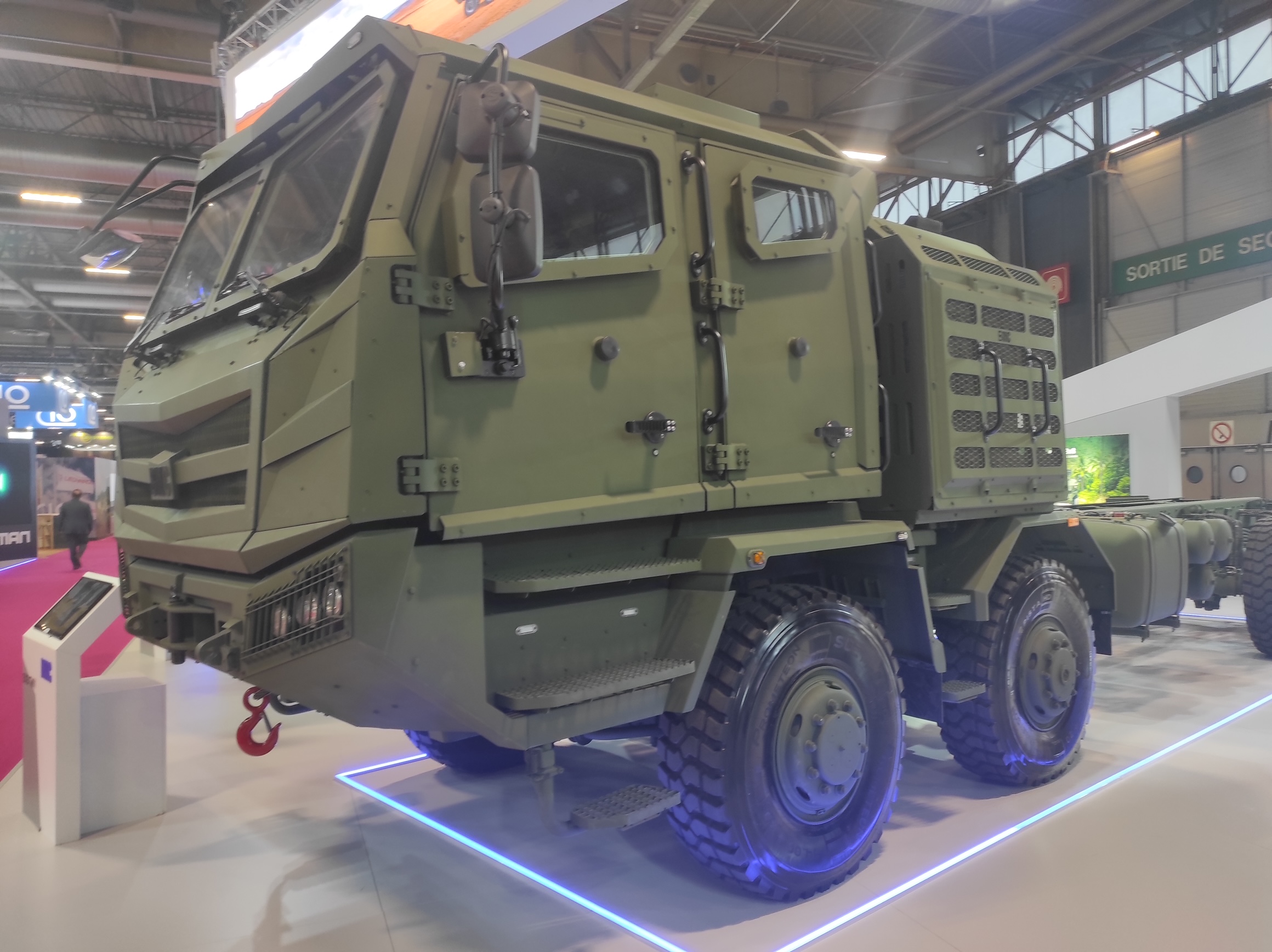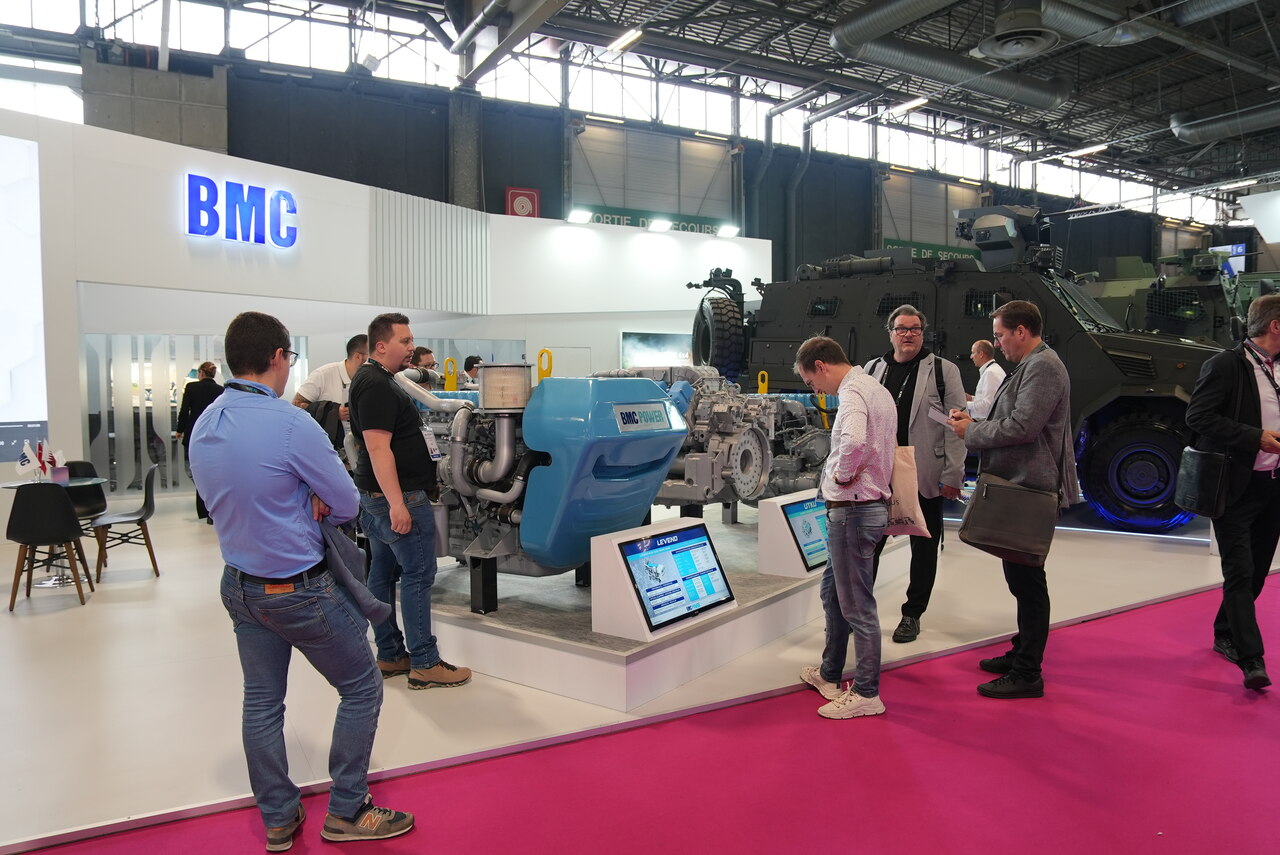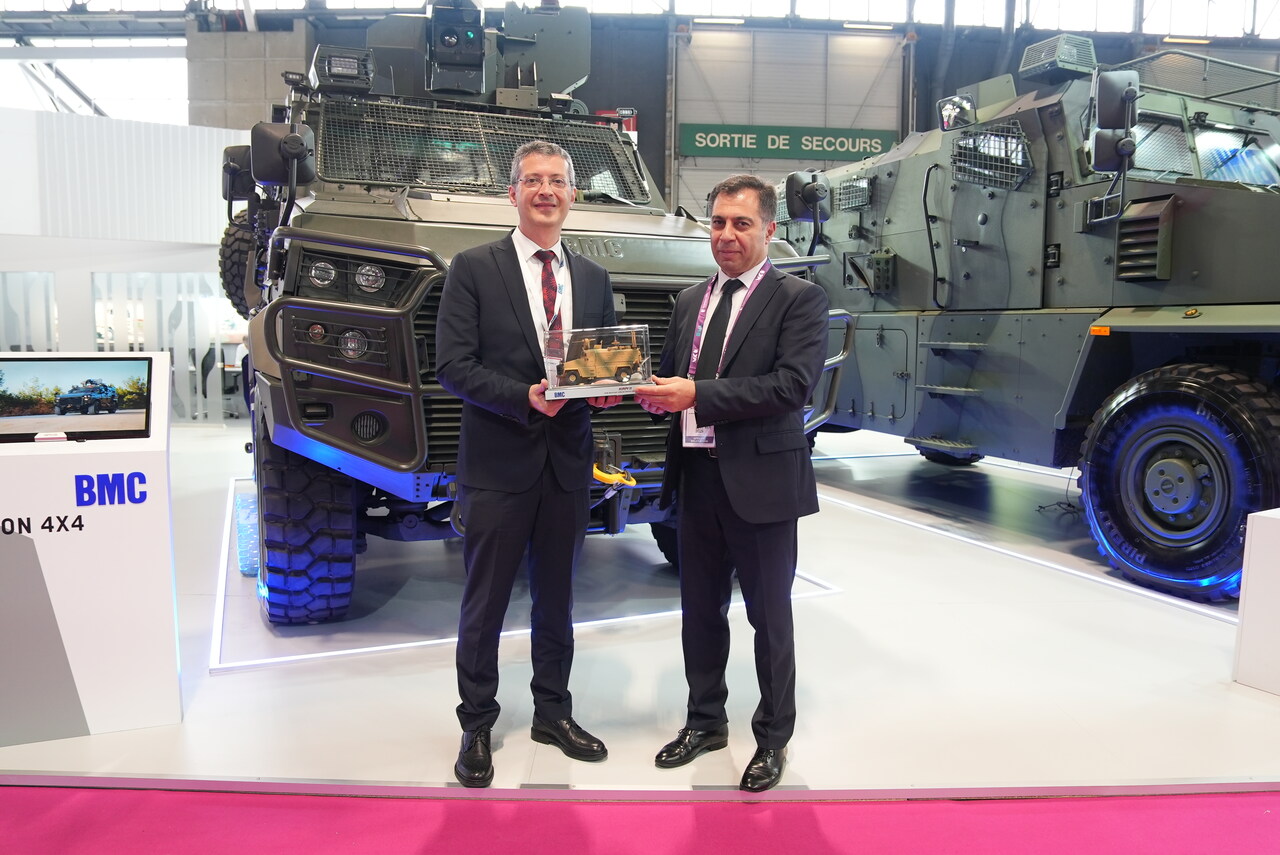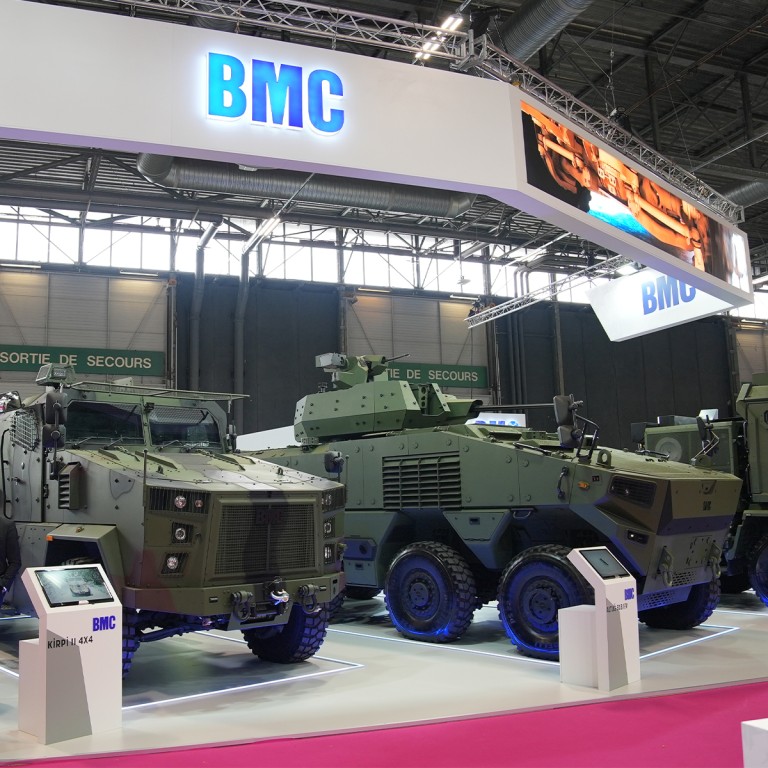BMC, one of Turkey’s leading manufacturers of commercial and military vehicles, showcased its military vehicles and engines developed by BMC Power using 100% Turkish engineering at Eurosatory 2024, held in Paris, the capital of France, from June 17-21, 2024. The vehicle on the Turkish BMC stand was a specialized off-road truck with a 4-axle chassis, designated as the 8×8 TWV, developed as part of Turkey’s national program to build a 155mm caliber automotive howitzer.
This national mobile howitzer – type 8×8 ARPAN-155 – was delivered to the Turkish armed forces for testing in 2023.
As BMC Power CEO Mustafa Kaval stated a little earlier, friendly and allied countries are showing great interest in ARPAN.
As a result, significant export successes of the system are expected.  ARPAN-155, whose fire control system was developed by ASELSAN, offers high strategic, operational and tactical mobility compared to tracked systems of similar firepower, providing the benefits of a low initial purchase cost and low operating, maintenance and sustainment costs.
ARPAN-155, whose fire control system was developed by ASELSAN, offers high strategic, operational and tactical mobility compared to tracked systems of similar firepower, providing the benefits of a low initial purchase cost and low operating, maintenance and sustainment costs.
Under combat conditions, ARPAN-155 can be ready to fire within 1 minute.
The system, which can fire 6 shots per minute, is also capable of leaving its position within 1 minute.
In other words, ARPAN can deliver intense fire support in a short period of time, within a total of three minutes, and then move to another location.
This is intended to make counterbattery fire more difficult and significantly reduce the possibility of rapid detection by enemy drones.
The systems also provide a major advantage over towed howitzers, especially in shoot-and-run missions, thanks to their short standby times and high maneuverability.
The Turks also emphasize that a drone strike against such a howitzer causes much less damage than a strike against a turreted howitzer module on a tracked chassis.
Moreover, in the event of the irreparable destruction of such systems, the losses associated with the loss of a motor vehicle are lower than in the case of the destruction of a tracked system.
In accordance with the needs of the Land Forces Command of the Armed Forces of Turkey, the ASFAT prime contractor project has been working on a 155mm howitzer integrated with an 8×8 tactical wheeled vehicle.
The designation ARPAN-155 was borne by the truck-mounted 155 mm caliber howitzer, which was in the phase of combat testing.
The project used 8×8 tactical wheeled vehicles developed by BMC for Panther howitzers as the carrier platform.
ASFAT and BMC signed a “Tactical Wheeled Vehicle Contract” as part of the T-155 Panther howitzer modernization project.
Already in late December 2022, at the IDEAS trade fair in Pakistan, ASFAT presented a model of the new artillery system developed for the program to modernize the towed Panther howitzers, which were to be mounted on a truck chassis in an 8×8 layout, rather than 6×6 as originally proposed.
Turkey has thus begun to build its position in the market for truck-mounted armatohaubic cal.
155mm, dominated in recent years by several designs, including the French Caesar.
The model was intended to encourage Pakistanis to buy such a solution, since the country also uses towed Panther armato howitzers.
Two weeks later, an official demonstration of the finished vehicle was held, announcing the delivery of the first units to the Turkish Armed Forces in August 2023, beginning the process of upgrading hundreds of towed Panthers cal.
155 mm.
Among those present at the event were.
Turkish President Recep Tayyip Erdoğan.
The ARPAN-155 self-propelled cannon howitzer, which can fire directly and steeply, is the result of combining a towed Panter cannon howitzer with a BMC 525-44 8×8 truck chassis – the BMC TWV 8×8.
It is a purpose-built chassis with no civilian equivalent, 4-axle, all-axle drive.
One of its main features is a heavily forward, elongated, manned, four-door, integrally armored cabin, providing ballistic and mine protection at maximum level 2. This cab is slightly lowered and extended forward.
The steel front bumper has a narrow center hitch hook and holes on the sides for pulling cables.
Each corner section contains three headlights set diagonally, protected by a steel mesh.
The front steel cowl above the bumper has a similar styling layout, with two elongated air intakes and BMC branding on the trim between them.
The upper part of the cowl is sloped backward, transitioning seamlessly into a module with split armored windows.
The cabin, slanted forward, has a front door in front of the axles and a rear door above the first of the front axles.
Entry is via three entry steps, aided by a vertical handle between the doors.
Entering the rear requires using the front steps and stepping over the steel fender section of the second front axle.
The front and rear doors are mounted on sturdy hinges and open with horizontal rotating handles.
The bottom edge of the front door is horizontal, and the front edge is slanted in line with the windshield angle.
The rear door has a simple vertical rectangular shape.
The armored glass of the front doors has a larger surface area than that of the rear doors.
Power is provided by a Cummins inline 6-cylinder engine with a maximum output of 585 hp or 447 kW/600 hp, mated to an Allison automatic transmission and transfer case.
Tires on all axles are single to maintain high off-road mobility.
The mechanical suspension of each axle is based on parabolic leaf springs.
The chassis frame has a traditional ladder system with reinforced stringers and crossmembers.
The permissible total weight is 36,000-38,000 kg.
Other key figures include a range of up to 600 km on paved roads, a ground clearance of 350 mm, and a top speed of 80 km/h.
This is important because systems of this type are often used for high-speed artillery missions, where high maneuverability and short set-up and assembly times count. 


